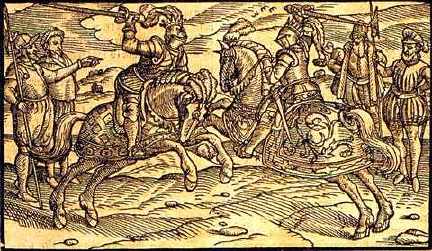The Wars of the Roses (2)
The term "Wars of the Roses" was originally invented by Tudor historians under Henry VII--among them Sir Thomas More*--who chose to describe the conflicts of the 15th-century English nobility principally as a dynastic struggle between two branches of the royal family.
In fact, the dynastic aspect of the conflict only came to the fore in 1460 when Richard, Duke of York, surprised even his supporters by laying claim to the throne. The "wars" developed mainly from the private feuds of the nobility, made worse by a king (Henry VI) too weak to control his subjects and too foolish to distribute royal favour equitably.
The result was a faction-ridden government in which nobles competed to dominate the king and further their own landed interests, Richard attempting to seize the throne only when there appeared no other way of settling his grievances*.
Even after possession of the throne became an issue, shifting alliances and betrayals among the nobility show that private interests were foremost. An increasing number of the nobility held themselves aloof from the main conflict, and even those involved were not always clearly "Lancastrian" or "Yorkist" in their loyalties.
Footnotes
-
More the historian
More's contribution was a biased but vividly written account of the life of Richard III. (Click for more on More.)
-
The wronged Richard
Richard had commanded the army in France for ten years, but had not been reimbursed for this and other services, with the result that he was experiencing financial difficulties. It was especially galling to him to see Henry's favourite, the Duke of Somerset, receive payment, despite losing Normandy to the French.
